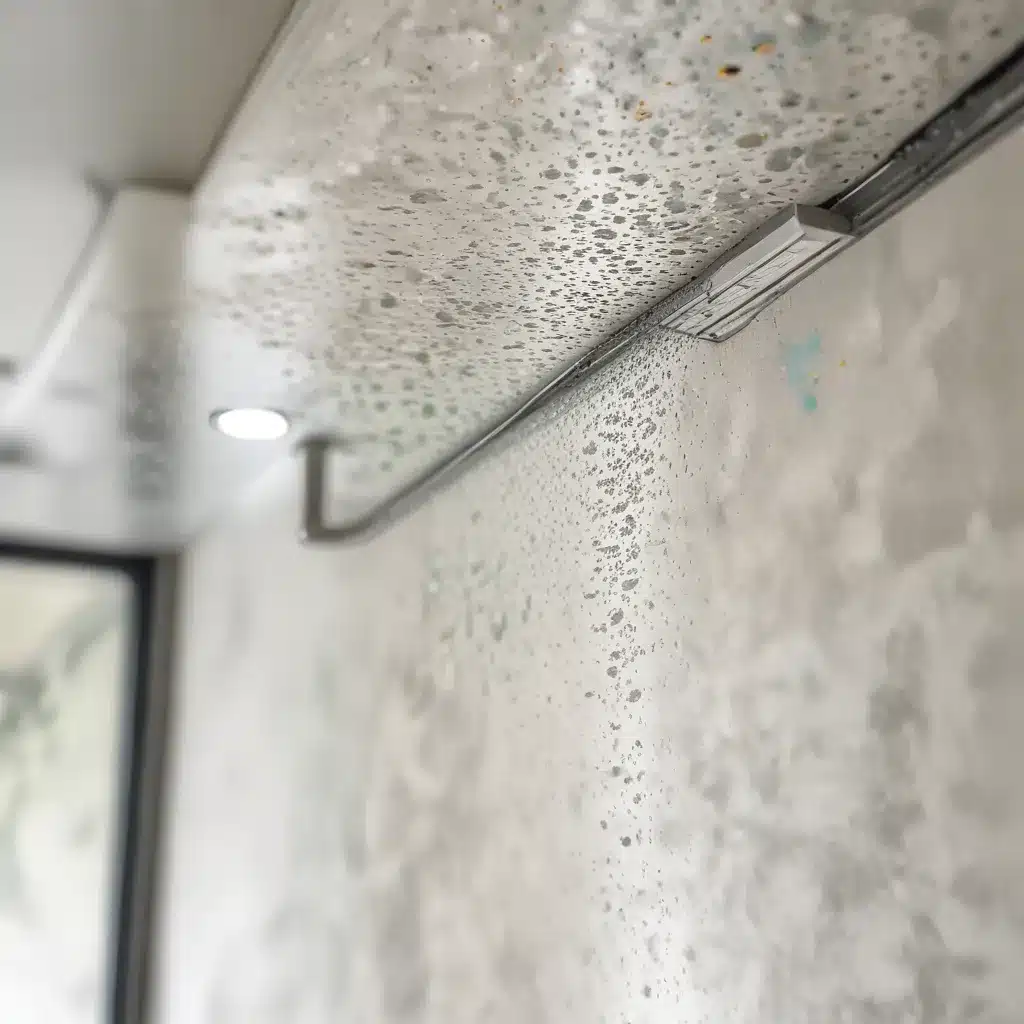
The Importance of Proactive Damp Proofing
As an experienced damp proofing specialist, I’ve seen firsthand the consequences of neglecting moisture control in built environments. Excess condensation can lead to a host of issues, from unsightly mold and mildew growth to structural damage and potential health hazards. That’s why taking a proactive approach to damp proofing and waterproofing is crucial for any homeowner or builder.
In my years working in the industry, I’ve encountered a wide range of moisture-related problems, each with its own unique challenges. Whether it’s a leaky basement, a damp crawl space, or persistent condensation on windows, the root cause is often a breakdown in the building’s moisture management system. That’s why it’s so important to understand the various mechanisms by which moisture can infiltrate a structure and the proven strategies for mitigating these issues.
Identifying the Sources of Moisture
One of the first steps in effective damp proofing is to pinpoint the sources of excess moisture. This can be a complex task, as water can enter a building through a variety of pathways, including:
- Leaks from faulty plumbing or damaged roofing
- Groundwater seepage through the foundation
- Condensation due to poor ventilation or thermal bridging
- Moisture intrusion from high-humidity outdoor air
To get to the bottom of the problem, it’s important to take a holistic look at the building’s design, construction, and operating conditions. This often requires a combination of visual inspections, moisture testing, and a thorough review of the building’s history.
Implementing Proven Damp Proofing Strategies
Once the moisture sources have been identified, the next step is to implement the appropriate damp proofing and waterproofing solutions. This can involve a range of techniques, each tailored to the specific needs of the building and its occupants.
Exterior Waterproofing
For buildings with persistent groundwater issues or leaks through the foundation, exterior waterproofing can be a highly effective solution. This typically involves applying a waterproof membrane or sealant to the exterior walls, combined with a proper drainage system to divert water away from the structure.
Interior Damp Proofing
In cases where moisture is primarily entering through the building envelope, interior damp proofing techniques may be the best approach. This can include the installation of vapor barriers, the use of moisture-resistant materials, and the implementation of effective ventilation strategies.
Dehumidification and Ventilation
Proper humidity control is crucial for maintaining a healthy and comfortable indoor environment. In some cases, the installation of a dehumidifier or the optimization of the building’s ventilation system may be the most effective way to manage excess moisture.
Innovative Technologies
As the field of damp proofing and waterproofing continues to evolve, new technologies are emerging that can greatly enhance the effectiveness of moisture control measures. From advanced sealants to smart moisture monitoring systems, staying up-to-date with the latest industry advancements can be a game-changer for both homeowners and builders.
Prioritizing Safety and Sustainability
Alongside the technical aspects of damp proofing, it’s crucial to consider the safety and environmental implications of any moisture control strategies. Proper handling of hazardous materials, adherence to building codes and regulations, and a commitment to sustainable practices are all essential components of a responsible damp proofing approach.
Occupant Safety
Excessive moisture can pose a significant health risk, particularly in the form of mold and mildew growth. Any damp proofing or waterproofing project must prioritize the safety and well-being of the building’s occupants, ensuring that any remediation work is carried out in a manner that minimizes exposure to harmful contaminants.
Sustainable Solutions
In today’s era of environmental consciousness, it’s important to consider the long-term sustainability of damp proofing and waterproofing techniques. This can include the use of eco-friendly materials, the implementation of energy-efficient moisture control systems, and the adoption of best practices that minimize the carbon footprint of the project.
Empowering Homeowners and Builders
As a damp proofing specialist, one of my key goals is to educate and empower both homeowners and builders in the effective management of moisture-related issues. By sharing my expertise and insights, I aim to help individuals and organizations make informed decisions that protect the integrity of their built spaces and the health of their occupants.
Proactive Maintenance
A critical aspect of successful damp proofing is a proactive approach to maintenance. Regular inspections, prompt repairs, and a vigilant eye for potential moisture problems can go a long way in preventing costly and disruptive remediation down the line.
Collaboration and Guidance
Damp proofing and waterproofing often require the expertise of multiple professionals, from building inspectors to structural engineers. By fostering collaboration and providing guidance throughout the process, I strive to ensure that all stakeholders are aligned on the best course of action.
Empowering Informed Decisions
Ultimately, my role as a damp proofing specialist is to empower homeowners and builders to make informed decisions about the moisture control strategies that are right for their specific needs. By sharing my knowledge, highlighting the latest industry advancements, and emphasizing the importance of proactive maintenance, I hope to play a vital role in preserving the integrity and longevity of the built environment.
Conclusion
Effective damp proofing and waterproofing are essential for maintaining the health, safety, and sustainability of our built spaces. By understanding the mechanisms of moisture infiltration, implementing proven strategies, and prioritizing occupant well-being and environmental responsibility, we can create structures that are not only aesthetically pleasing but also resilient and resilient.
As an experienced damp proofing specialist, I’m committed to sharing my expertise and insights to help homeowners, builders, and industry professionals navigate the complexities of moisture control. By working together, we can ensure that our built environments remain comfortable, energy-efficient, and free from the damaging effects of excess condensation.
If you’re interested in learning more about Addamp Proofing’s damp proofing and waterproofing services, I encourage you to visit our website at https://addamp-proofing.co.uk/. There, you’ll find a wealth of information and resources to help you make informed decisions about the best moisture control solutions for your project.

